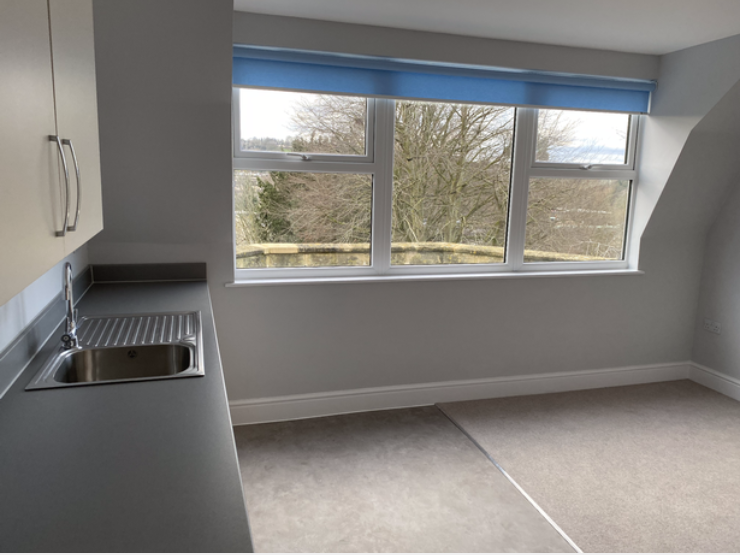This week I noticed that the tin foil hat brigade has reached Liverpool. The city council was all set to have a planning meeting that some internet experts deemed was about bringing the all-powerful World Economic Forum’s attack on their freedom – the 15 minute city – to their doorstep. Two dozen very angry scousers brought their metaphorical pitchforks and torches to city hall, got so threatening that councillors had to leave by a secret entrance. I’ve been following politics since 1981, the discourse around the 15 minute city makes the least sense out of anything I’ve borne witness to. I don’t understand how people could find the idea of essential public services and commercial amenities within walking distance of their house to be problematic, and I fail to see how such a simple concept can be misunderstood.
I know that there is a permanent angry brigade out there, I’m interested in Liverpool and from time to time I dip into the Liverpool Echo’s website. Now scousers are known for being warm and friendly and having a sharp wit. The ones who leave comments on the Echo website aren’t though. They’re as angry, vengeful, petty and alienated as Terry23423432 or SixKindsofDave who post vitriolic comments on my local newspaper websites here down South. So the 15 minute city headbangers mean there is far more heat than light in the discourse, and they’ve got it all spectacularly twisted. Politics should never become a shouting match, where those who shout the loudest and the longest get their way. There’s a danger with a number of urban planning issues that’s what we’re heading for – LTNs, cycle lanes, clean air zones, 15 minute cities tend to be opposed by the same people who are generally part of the same demographic. They are a small, but vocal minority and there’s a danger too much weight is given to their opinions which, quite frankly stand in the way of progress when it comes to quality of life.

What’s the opposite of the 15 minute city? The long distance city. We don’t have multiple examples of this in the UK, there are many in the car-dependent US, but if planning goes spectacularly wrong that’s what you end up with. Possibly the closest we’ve come are the amenity-free deserts on the edge of Glasgow where the ice cream wars took place. Every commercial or public service transaction requires a car journey or long bus ride. The long distance city is inherently sexist, anti-child, and ablest. It’s sexist because a far greater number of adult women don’t have a driving licence and depend on active travel/public transport to get about – walkable journeys are a priority for them in a way alpha males can’t relate to. While the gap is closing, we can see from the chart that men have always been more likely to drive, and as pass rates are largely static we’ll never reach a 100% pass rate, or 100% car ownership rate. Indeed the most recent stats show car ownership is declining amongst the young.

Long distance cities are obviously anti-child because they are most likely to be the victim of a road traffic accident and children can’t drive themselves. High traffic, dangerous traffic affects child health and their freedom to play in their neighbourhood – a freedom that was often enjoyed by the boomer generation who are so militantly pro-car now. Children, incidentally, don’t take part in LTN consultations, but they are the most adversely affected by rat-running through traffic in residential areas.
Long distance cities are also ablest as those who are mobility restricted would prefer to travel the shortest distance to do anything and if somewhere isn’t walkable, it’s probably not wheelchair or mobility scooter friendly either.
So the need for neighbourhoods to be walkable with a wide range of essential services on the doorstep has always been there. However the 15 minute city is a relatively new concept – what’s going on? It’s my contention that the 15 minute city concept is a response to the hollowing out of lots of residential areas, leaving them bereft of many essential services. In the past we’ve understood that towns and cities grow organically and generally respond to peoples’ needs in logical and obvious ways. A few recent trends have mitigated against that, I believe they are:
- The rise of edge-of-town big box retail, taking trade away from independent shops in suburbs
- The rise of e-commerce, going further and further up the value chain, combined with supermarket home delivery
- The cut backs and site consolidation of public services, meaning there are fewer primary schools, fire stations, police stations, post offices, dentist and doctors surgeries
The digitisation of services and some physical product mean certain high street staples are gone, never to return – we’re unlikely to see the revival of the video rental store any time soon. The hollowing out of physical retail has been pretty dramatic – in the past it would be perfectly normal to go into a town centre to make a big ticket purchase – take a good look at furniture or electrical goods. Now it’s surprisingly difficult to go to a physical store and talk over the options of buying a new dishwasher with a salesperson face to face – we trust the internet so much it’s now click and deliver – or don’t bother. In the past we’ve allowed shopping centres to grow and evolve naturally. Should there be political intervention to ensure that your high street has a Thai restaurant, a pharmacy and a bakery, but excludes a national supermarket chain? The precise composition of your local shopping centre matters, when out canvassing in London people on doorsteps pro-actively bring it up – Blackheath High Street – for example, is now regarded as a tourist trap by locals with too many coffee shops and not enough banks. In my local shopping centre there is a row that includes a tanning salon, a hairdressers and a nail bar, the units used to house a bookshop, a toy shop and a greengrocers. Where there are good occupancy rates that often disguises a lack of essential services. That’s become a political issue, which is why it requires political intervention to restore services down to a neighbourhood level where laissez-faire capitalism has allowed a suburban retail hollowing out process to take place over the last 40 years.

In the public services realm the notion of a small facility for ANYTHING is now deemed untenable. In my local area small police stations and primary schools in the countryside have been closed, I’m sure that’s typical of villages, small towns and the smallest facilities in suburbs. This is why the Welsh Liberal Democrats oppose all rural school closures. This is based on the quite reasonable standpoint that public sector cutbacks have happened across villages and towns in the last 40 years, they’ve already gone too far and we’re drawing a line in the sand.
So what does the 15 minute city mean for public services? In our modern data driven world it means that councillors and officers in a city like Liverpool have perfect knowledge of the areas that lack a nursery, a community centre, a doctors or dentists, a recreation ground and try to plug the gaps accordingly. If that means a return to more smaller facilities, that are easier to access, surely that’s a positive thing. You have to be pretty paranoid to think building a play park on the edge of a suburban field because there are no other parks for three miles is part of a Truman Show-style plot to hem you in.
The laissez-faire approach to town centre commercial property unfortunately has a beggar-my-neighbour outcome. In the Thames Gateway two of the UK’s biggest shopping malls exist – Lakeside and Bluewater. Both malls have led to the decline of the towns next to them. A visit to Dartford or Gravesend is depressing – lots of empty units and the decline is pretty much constant, Gravesend loses a long-serving shop or restaurant I’ve used for years every few months. The ship chandlers that was there since the 17th century, the small independent electrical retailer staffed by people with brains the size of a planet, the analogue toy store, the cafe overlooking the statue of Pocahontas – all gone.

I’m sure Cheshire Oaks, Bicester Village and Meadowhall in Sheffield are doing roughly the same to their surrounding areas. Dartford actually had the 2nd biggest population increase of anywhere in the country – 20% in the last decade – according to the 2021 census. Dartford has a growing population and a middle class with purchasing power but that’s not reflected in Dartford town centre. If a town with exceptional population growth looks like it’s in the doldrums that shows how the strength of out-of-town retail outweighs everything. This is perhaps not apparent to those who don’t have a US-style mall in a giant chalk pit near where they live. My personal impression is that Bluewater opened in 1999, the tone is set, and the local towns don’t really have an answer even if there’s a healthy level of housebuilding thanks to HS1 and the proximity of London. You either accept this long-term structural decline, which is not arrested by population growth, or economic growth (we had some of that just after Bluewater opened, I distinctly remember it), or town planners have to become a lot more interventionist to create a better mix of retail and public services.

I’m lucky, I live in a village with a 50-unit shopping centre, primary school, doctors, dentists and village hall five minutes walk from my house. I don’t think it’s selfish or unreasonable to want that for others too, and I know for a fact that more and more of parts of suburban Britain lack the essential services people need. The 15 minute city is a codified concept for something that always existed and people enjoyed unconsciously, let’s return suburbia to normality.
For more detail on the 15 minute city drama in Liverpool please take a look at Richard Kemp’s blog (and follow his work more generally)
































